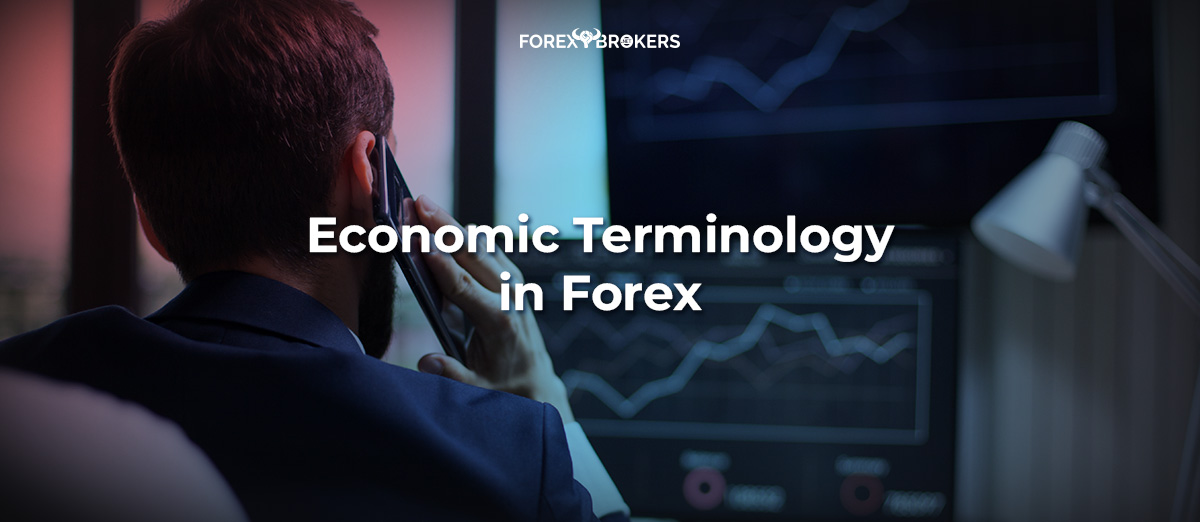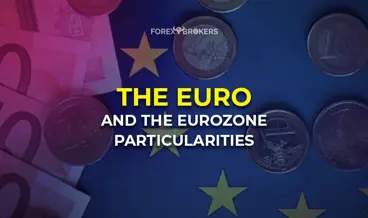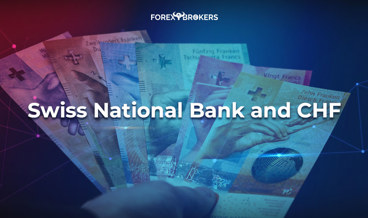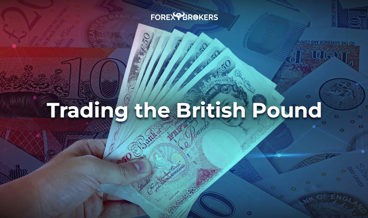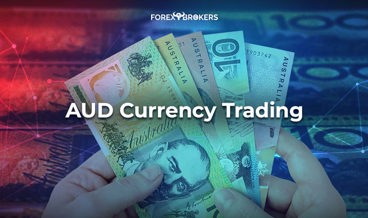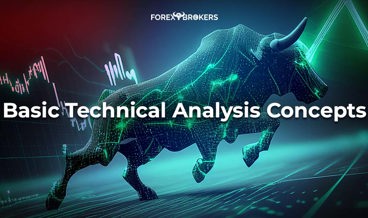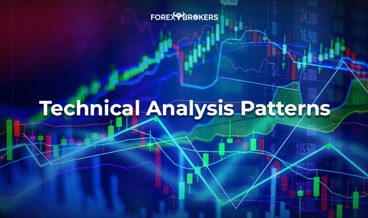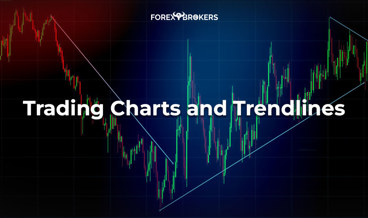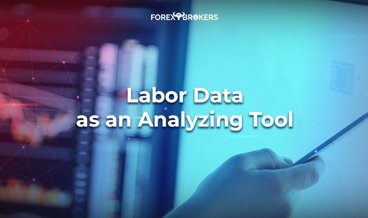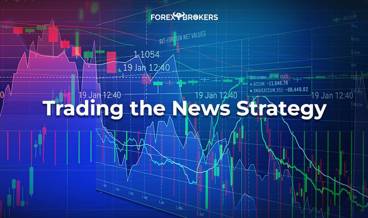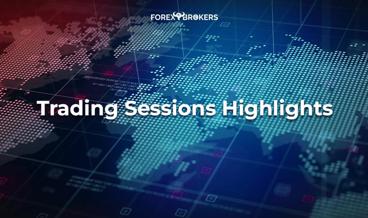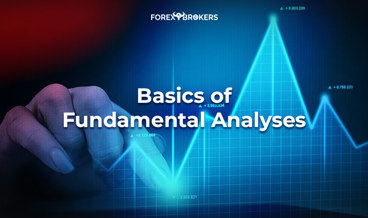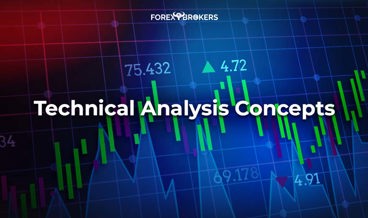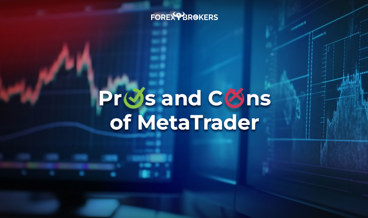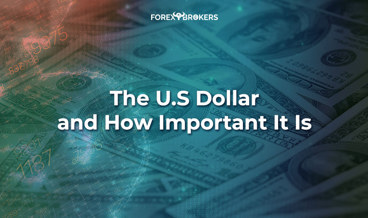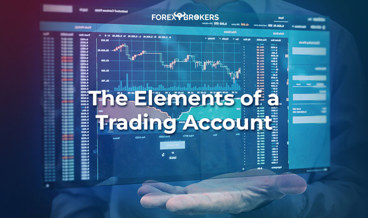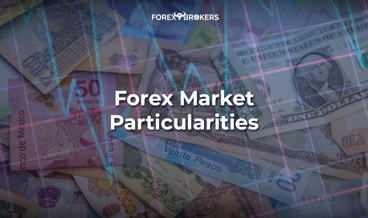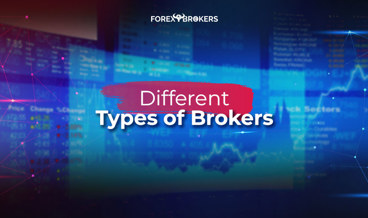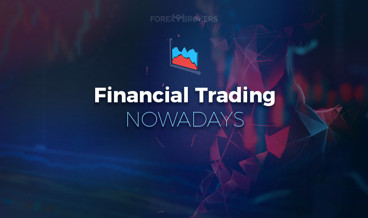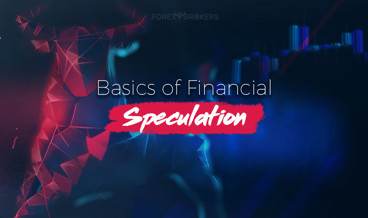In a world dominated by central banks' decisions and technical patterns, it comes as no surprise that a specific language exists. This article focuses on the jargon traders use when referring to various market aspects and activities.
Also, we'll look at economic terminology every trader should know. Furthermore, this article dissects central banking terms so that every retail trader understands what they mean.
In doing that, we'll dive into the world of trading financial markets, explaining why there's a need for unique language and why it is essential for traders to know such terms.
As you're about to find out, even some currencies have a nickname that traders use, as well as some currency pairs.
In some cases, the use of special terminology in Forex is justified by historical considerations. On other occasions, there's the need to say things in such a way as not to create unnecessary market volatility.
A central banker would never say a currency is too strong or too weak. Instead, a central bank uses dovish or hawkish terms that imply the currency's strength.
Because trading algorithms dominate financial markets, the risk is that even the slightest mistake may create chaos in a second. Also, interconnected markets lead to the spillover effect, where a move in one market triggers a domino effect in other markets.
Economic terminology plays a vital role in understanding how the currency market reacts. We've argued in a previous article that an economic background helps traders better understand the market.
However, if there's no economic background, then the trader must know economic terms so that he/she understands financial news and interprets them easily.
Therefore, this article focuses on traders' jargon, central banks' terminology, and economic terms that traders should know.

Traders’ Jargon
Nowadays, the Internet has given birth to large social communities. Social networks like Facebook or Twitter consume most of the people's time when it comes to interaction and socializing.
Trading communities exist too. As we'll show in a future article part of this academy, the FinTwit community gathers traders and economists, discussing market aspects 24/7.
Also, social trading has become more and more popular. It means traders gather in large communities hosted by the brokerage house and share ideas for trading the markets. In some cases, the broker publishes the ideas so that everyone sees how the trade played out in the end.
When referring to trading aspects, traders use specific terms. Even if a beginner doesn't know what they mean, he/she adapts quickly and finds the meaning. There's no other way around it.
It all starts with the basic concept of long and short in Forex.
Long versus Short
Everything in the world of trading begins with understanding the long and short concepts. This is particularly important in the currency market, where traders can sell an asset without actually owning it.
"Long" represents the equivalent of buying. So when a trader says that "I'm going long the EURUSD," it means he/she buys the EURUSD pair.
But "long" also refers to a current position. For instance, if "I’m long the dollar,” it means I bought the dollar against another currency. Rarely you’ll hear traders referring to buying something, but mostly, they go “long.”
Nonetheless, this is an aspect specific to the currency market. For instance, it is unusual for a stock trader to say that he/she goes long Amazon or Apple. Instead, in equity trading, buying and selling are the correct terms.
“Short” is the opposite of long. In other words, it represents the intention of selling a currency or currency pair. Also, it shows a position in the market and the state of the portfolio.
Bullish versus Bearish
When a trader goes “long” a currency pair, the action reflects an opinion. He/she is bullish on that currency pair or currency.
Bullishness refers to a rising market that should increase in value in the future. On the other hand, being bearish shows expectations that the market will fall. The trader expects that the currency pair or currency will fall soon.
So if I’m bullish on the USD, I expect it to move to the upside. But I can also be bullish on the entire market. For instance, I’m bullish on DJIA (Dow Jones Industrial Average), expecting it to continue to make higher highs.
The terms come from the bull and the bear, the two animals. Because the bull always has its horns pointing to the upside, traders use that when referring to a rising market.
On the other hand, the bear always walks with its head pointing to the ground, so bearish traders want to sell the market.

- Bullish and Bearish versus Long and Short
A trader also can express his/her bullish or bearish views on an economy or part of the world. For instance, if you’re bearish emerging markets, you will probably express that bearishness by selling the TRY (Turkish lira) or other emerging market currency against the USD or the EUR or selling the emerging markets equity indexes or an ETF (exchange-traded fund) that tracks emerging markets stocks. These are just a few examples to understand the bullish and bearish concepts.
We can say that “bullish or bearish” goes a bit further than “long or short.” While long and short mostly refer to a position or future action, bullish and bearish refer to an intention or an opinion at the end of an analysis.
Let’s say you’re analyzing the USDJPY pair from a technical and fundamental perspective. You look at the economic differences between the two economies, as well as at the interest rate differential.
Moreover, you use technical analysis on the bigger time frames to form a technical picture. At the end of both technical and fundamental analysis, you’ll be bullish or bearish on the USDJPY pair. When ready to act on that analysis, you go long or short the pair, meaning you buy or sell the USDJPY pair.
Hawkish versus Dovish
Traders are an essential group of market participants or influencers. But so are central bankers. A central banker also has opinions about a market, a currency, or an economy. However, the central bank can’t go long or short or express a bullish or bearish sentiment.
Instead, a central banker expresses a hawkish or dovish attitude. A central banker's speech or interview in a financial newspaper may be hawkish or dovish.
A hawkish statement expresses an economy that performs well, a job market that outperforms, and the intention of the central bank to tighten the monetary policy. For the trader, a hawkish central bank statement is bullish for the currency.
On the other hand, when a central bank expresses ongoing economic concerns, it suggests an easing monetary policy. More precisely, the message is dovish; for traders, a dovish message is bearish for the currency.
In other words, hawkishness and dovishness are the equivalents of bullishness and bearishness. The only difference is that in the first instance, the terminology belongs to central bankers, while in the second one, to traders.
Traders would want to know what the central bank's message was. Many times, reading an article in the Financial Times or other financial publication, you’ll find out that the ECB (European Central Bank) delivered a hawkish statement at its regular meeting or that the Fed’s FOMC (Federal Open Market Committee) statement was dovish, sending the dollar lower.
- Hawkish and Dovish: Terms Expressing an Attitude
The two terms also come from two animals. In the first case, the hawk in the sky flies at higher altitudes. Therefore, a hawkish statement shows bullishness; the traders consequently want to buy the asset.
In the second case, the dove flies too, but at lower altitudes. So the difference between hawkish and dovish is that one expresses a bullish attitude, while the other is a bearish one.
What’s important here to remember is that only central bankers are hawks or doves, not traders. Instead, traders are bulls or bears.
Hawks and doves terms reflect central bankers’ position. The FOMC in the United States provides a perfect example.
The FOMC members split between hawks and doves. In the statement or during the press conference, traders focus on the hawks versus doves ratio. How many hawks and doves are in the FOMC?
When a member, known as a hawk, turns dovish, that’s a bearish sign for the market, sending the dollar lower. When a dove turns hawkish, that’s a bullish sign. The dollar moves higher.
Currencies and Currency Pairs’ Nicknames
Hawks and doves, bulls and bears, long and short—are the basic terms when trading financial markets. In the world of currency trading, even currencies and some currency pairs have a nickname.
It is, therefore, useful to understand what traders and the financial press talk about. Some examples to consider:
- Loonie dollar
- This is the Canadian dollar (CAD), and again, the nickname comes from an animal. The loon (a bird) on the one-dollar coin is responsible for it, and traders often refer to the Canadian dollar as the loonie dollar. For example, a trader may “go long the loonie” or be “bearish the loonie.”
- Cable
- Another currency bearing an interesting nickname is the GBP (Great Britain pound). Also known as cable, the nickname comes from the cable laid down on the bottom of the Atlantic Ocean to connect the two financial centers of London and New York.
- Kiwi dollar
- Another animal, also a bird, is responsible for the NZD (New Zealand dollar) nickname: the kiwi. The kiwi bird appears on the one-dollar coin; hence, traders refer to “buying the kiwi” or being “bearish the kiwi” when they want to trade the NZD.
These are just a few examples of currencies having nicknames often used in traders’ jargon. Other examples exist for a currency or a currency pair, life “fiber” for the EURUSD pair, or “aussie” for the AUDUSD pair.
- Big Figure and Pips
Traders often use the term “big figure” in the wrong way. To explain what a big figure means and how traders use it, we must refer to a currency quote. Let’s take the EURUSD rate at the time of writing this article: 1.10369. This is a five-digit quotation.
The convention says that the last three digits refer to the pip number, emphasizing the fourth digit. For instance, there are 36.9 pips in the quote above corresponding to the last three digits.
Pips are the way traders keep score. However, the value of a pip depends on the volume traded. For example, if the trader goes short and the EURUSD pair moves to 1.10, the trader makes a profit of 36.9 pips. But the actual profit depends on the value of each pip, given by the traded volume.
If the last three digits in a five-digit quotation are pips, the first three represent the big figure. In this case, 1.10 is the big figure.
Therefore, traders often use expressions like “the market traveled two big figures,” highlighting that the EURUSD pair traveled over two hundred pips. One big figure is made of one hundred pips.
- Round Numbers
A round number refers to specific levels. For instance, 1.10000 is a round number. Also, 1.15000 or 1.20000 are round numbers for the EURUSD pair.
What’s interesting about round numbers is that traders use them to place the stop loss in their vicinity. For instance, if one goes long 1.10369, the tendency is to place the stop loss in the vicinity of the 1.10 round number.
For this reason, round numbers act as psychological levels. Many traders enter and exit the market at critical round numbers, and the price action surrounding round numbers can take quite some time.
- Parity
When a currency pair trades at parity, it means that the two currencies have equal value or the quote reaches 1.0000.
The USDCHF, for instance, trades around parity for quite some time now. The price moves above and below the parity level without a clear direction.
It influences the relationship between the two majors and the corresponding cross. Let us explain this in a bit more detail.
For instance, imagine trading the GBPUSD pair, either on the long or the short side. Then while the GBPUSD trade is open, an opportunity arises on the GBPCHF pair.
Before jumping in and taking the trade, you should think twice. Because the USDCHF pair trades at parity, it means that taking the GBPCHF trade in the same direction as the GBPUSD will effectively double your exposure.
- MetaTrader
Almost all forex brokers offer it in two versions: MetaTrader 4 and MetaTrader 5. Easy to use, it has everything you need to trade both manually and with an expert advisor. Later in this trading academy, we’ll have a dedicated article on how to use MetaTrader and make the most of it.
- Technical Terms
Technical analysis is formed by technical studies designed to help traders make a forecast. These studies come in various forms, like indicators (trend indicators and oscillators) or trading theories (Elliott Waves, Drummond, Gann, etc.). Some technical terms consistently appear, regardless of the trading method used.
- Support and Resistance
One of the most relevant concepts in technical analysis, support and resistance are interchangeable. It means that once broken, support becomes resistance, and resistance turns into support.
Moreover, support and resistance come in two forms: horizontal and dynamic. Tellingly, during a bearish trend, the market stalls at a specific level that provides support, or it finds it difficult to break particular areas during a bullish trend. Those areas offer resistance.
- Price Action
The term “price action” refers to the market’s volatility mostly. For instance, the Asian session is known as having tight ranges. As such, traders refer to the market as “there’s little or no price action” in such a session.
The same term is used when the market moves unusually. For instance, on a bullish USD news, the USD falls rather than rises. That’s strange price action as the market moves differently.
- Oscillators
These are technical studies mostly placed at the bottom of a chart. For this reason, oscillators consider multiple periods before plotting a new value, and traders use them to compare the moves of a currency pair with what the oscillator shows. Also, oscillators show overbought and oversold levels. The relative strength index (RSI) or stochastics are relevant oscillators we'll discuss in future articles. As opposed to trend indicators, oscillators are mostly used to find reversal conditions.
- Trends
Bullish or bearish, trends form in all time frames. A bullish or rising trend continuously creates higher highs and higher lows. In contrast, a bearish trend forms lower lows and lower highs. The trend remains in place as long as these two series exist.
Trend riding is one of the reasons why retail traders join the markets. The idea is to buy dips into bullish trends or sell spikes into bearish ones and ride the trend until a reversal pattern forms.
- Reversal and Continuation Patterns
As the name suggests, the price forms reversal patterns on tops and bottoms. Such examples are the head and shoulders or double and triple tops.
Continuation patterns form in the direction of the trend. The price breaks in the same direction as the underlying trend, basically resuming the price action after some consolidation. Relevant examples are the ascending or descending triangle and the bullish and bearish flag.
- Market Consolidation
Price consolidation refers to the market sitting in tight ranges. Typically, during the Asian session or when there’s a bank holiday, the currency market moves in very tight ranges, consolidating levels.
- Divergencies
A divergence forms when the price of a currency pair shows something else than what an oscillator does. For instance, a bullish divergence forms when the price makes two lower lows, but the oscillator fails to make the second lower low. That’s a bullish signal, and traders go long.
Other Terms
Both technical and fundamental analysis is full of trading terms continuously used. We’ve just mentioned some important ones, but during this trading academy, all articles contain specific terminology related to trading financial markets.
- Market Psychology
An important concept, market psychology refers to behavioral aspects mostly dictated by human nature. Greed and fear are factors that drive most traders’ behavior, and plenty of studies and trading strategies exist to understand market psychology and benefit from trading according to the concept.
Understanding market psychology comes with experience. Not every market move has logic, and most of them are irrational. Depending on the trading style and strategy deployed, market psychology helps to avoid mistakes when choosing the right market positioning.
- Risk Management
Risk management or money management is one of the essential concepts in trading. It refers to the ability of the trader to manage the trading account in such a way as to make a profit while having little or no drawdown.
The area of risk management is a vast one. Entire books and theories exist on how to construct and protect a portfolio. Portfolio management may seem only for investing in the stock market or fixed income, but the principles apply to the currency market too.
When a trader opens and funds an account, he/she instantly becomes a money manager. Therefore, money management concepts, based on lowering the risk through diversification and other tools, are a must for the profitable currency trader.
Central Banks’ Terminology
Because currency trading is mostly about interpreting the monetary policy set by central banks, it is essential to know the terms used and understand the key concepts. Before anything, we should mention that a central bank monitors every currency part of the forex dashboard. Moreover, a currency mostly belongs to a country but also to a region (e.g., the euro for the eurozone).
It is not the time yet, to dive into the role of central banks. This part of the article merely presents concepts and definitions of terms to know when trading.
They are important in understanding the currency market and what makes the prices tick. Also, such terms were used in the past, and some represent tools at central banks’ disposal when setting the interest rate level.
Monetary Policy
The monetary policy represents the sum of all the actions taken by a central bank to influence aggregate output and prices. The central bank changes the bank reserves and reserve requirements for other commercial banks in its jurisdiction, but also the target interest rate.
Setting the monetary policy is an ongoing process. The dominant central banks in the world have regular meetings to assess the strength or weaknesses of the economy.
Central banks meet and release the monetary policy statement either monthly or every six weeks. Depending on the importance of the currency in the overall forex dashboard, traders worldwide watch the statement closely.
For instance, the FOMC Statement is of interest to all traders because the USD is the world’s reserve currency and the pillar of the currency market. Everyone wants to know where the dollar goes next.
On the other hand, the statements of second-tier central banks, like the Bank of Turkey or the Russian central bank, don’t create much of a fuss in the currency market.
Quantitative Easing
Also known as QE, Quantitative Easing refers to the central bank buying its own government's bonds. Or, simply put, buying the debt.
A controversial process, it was used by most central banks around the world to fight the 2008 financial crisis. In the United States, the Fed needed no less than four rounds of QE, with the last one having an open-ended characteristic, in the sense that it was meant to last for as long as necessary until inflation comes to target and the economy recovers.
A central bank prints money out of thin air by buying its own government bonds. As the name suggests, easing refers to easing the monetary policy. Thus, that’s bearish for the currency, and traders open short positions.
After the Fed came up with the idea of Quantitative Easing, other central banks around the world began to use it. Bank of Japan and the European Central Bank are just a couple of examples.
The rule of thumb says that the more aggressive the QE program, the weaker the currency becomes. That’s only natural, considering that the money supply (i.e., the quantity of money circulating in an economy) increases.
Due to the success of the various QE programs around the world (e.g., unemployment in the United States fell to a record low, and in the eurozone, it fell below pre-crisis levels), all central banks announced that QE represents a monetary policy tool from that moment on.

Balance Sheet Expansion
The QE programs lead to the central banks’ balance sheet expansion. The bonds bought by central banks under the various QE rounds are reflected in their balance sheet.
By buying the government debt, the bonds become a liability for central banks, bearing the associated risks. Monetarists and central bank watchers worldwide argue that the uncontrolled balance sheet expansion that took place in the last years is getting out of control.
On the other hand, this is a new tool that had never been used before the 2008 financial crisis. It means that besides the theoretical effects on an economy and monetary policy, there’s no precedent to know precisely its side effects.
Balance Sheet Contraction and Quantitative Tightening
The opposite of Quantitative Easing is Quantitative Tightening. Also known as QT, it is the process when central banks sell the assets (bonds) held on their balance sheet.
QT leads to balance sheet contraction, and, as the name suggests, it is a tightening process. Hence, it leads to a rise in the currency.
The Federal Reserve started a tightening cycle in December 2017. It hiked the rates from 0.25% (the lowest level the federal funds rate can reach) to 2.5% in December 2019. This is a bullish USD.
At the same time, the Fed started the QT process, adding fuel to the USD strength. Another hawkish move by the Fed, translating into an even stronger USD. As the EURUSD chart below shows, the market took it the right way and sent the EURUSD pair from 1.25 all the way down to the 1.10 level.
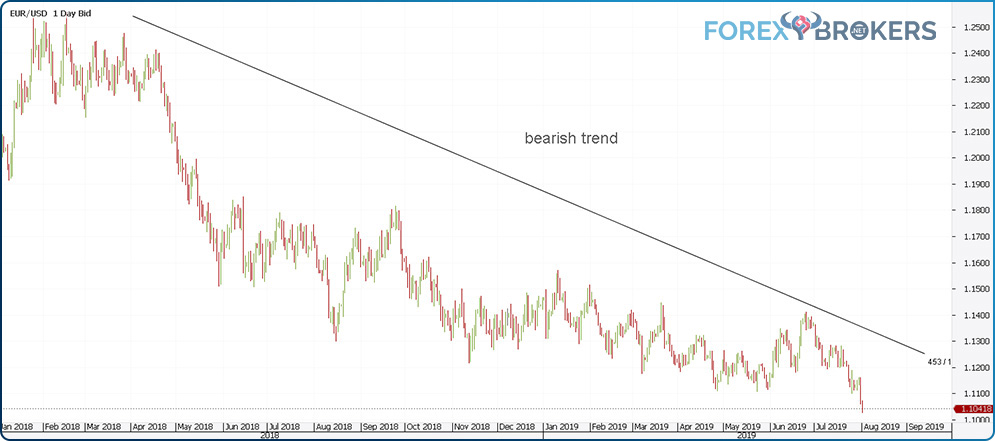
Besides the obvious implications for the currency market given by the changes in monetary policy, the bond-buying programs change the bond yields. Because investors always search for higher yields, such changes generate essential flows.
For example, the middle of 2019 sees most bonds in G10 countries having negative yields. In contrast, in the United States, the interest rate set by the Fed sits at 2.5%. Bonds are attractive, and investors from other parts of the world buy American bonds for their positive yield. To pay for them, the investors need USD, so the dollar is supported on the currency market by aggressive buying.
Forward Guidance
A relatively new concept introduced by central banks worldwide now represents a significant monetary policy tool. Forward guidance is the sum of all communication tools used by central banks.
A good example of effective forward guidance comes from Mario Draghi. At the helm of the ECB during the eurozone crisis (i.e., Greece's turmoil almost led to the eurozone collapse), Mario Draghi delivered a speech in London. During that speech, he used the now-famous “whatever it takes” expression, indicating that the ECB will do whatever it takes to preserve the euro. He said, “And believe me, that will be enough.” The market took his word, and the euro reversed the bearish trend instantly.
When central banks indicate that they will keep the interest rate level low for an extended period, that’s also forward guidance, and so on.
Economic Terms Traders Should Know?
Part of understanding financial markets is understanding economic terms. One doesn’t need economic studies, but a basic understanding of concepts helps.

The terms listed below are either economic releases that appear in the economic calendar or economic terminologies that help in interpreting the currency market:
- Recession and Expansion
- Economic recession leads to lower employment levels, and the central banks intervene to ease the monetary policy (negative for the currency).
- During economic expansion, the central banks raise the interest rate level, stimulating savings to fight higher inflation (positive for the currency).
- Inflation
- It appears in all central banks’ mandates as part of their job is to keep price stability.
- A typical central bank mandate is to keep inflation below but close to 2 percent.
- Deviations from the 2 percent level determine the move in the currency market.
- Higher inflation leads to higher interest rates (positive for the currency).
- Lower inflation leads to lower interest rates (negative for the currency).
- Also called CPI (consumer price index)
- Released in all major economies
- Values higher than fifty show economic expansion (bullish for the currency).
- Values lower than fifty indicate economic recessions (bearish for the currency).
- Calculated mainly for two sectors: manufacturing and services.
- Some countries also calculate the PMI for the construction sector.
- Calculates the PMIs for the United States
- Comes in two releases: manufacturing and non-manufacturing
- Changes in the cost of labor
- Excludes the farming industry
- Calculated in the United States
- Also called NFP
- Released every first Friday of the month
- Shows the change in nonfarm payrolls in the United States
- One of the most important economic releases because the Fed has a mandate to create jobs besides targeting 2 percent inflation
- Shows the change in the value of total goods and services in an economy
- The higher, the better for the currency
- Percentage change in the number of the total workforce that is unemployed
- The lower, the better for the currency
- Inflation excluding food and energy prices
- Preferred measure for inflation in the United States
- More important for the USD than the classic consumer price index release
Conclusion
Understanding the financial terminology helps traders figure out the next market move. As the economic context changes over time, new terms appear.
The economy as science evolves like any other discipline (e.g., medicine, physics). Developments in various areas change the way we see people, and they change the way markets function.
Because the market behavior represents the sum of all traders’ inputs, it is the first place to see the reaction when new tools appear. For instance, forward guidance is a relatively new term in central banking terminology. A few years ago, it didn’t exist, but now it represents a monetary policy tool used by central bankers.
All in all, the jargon traders use adapts to changes in the economic landscape and the central banking communication. For now, everything in the currency market depends on what the central banks do with the interest rate. Therefore, if there’s a source for new terms and terminology to use in the currency market, that’s in the central banking territory.
